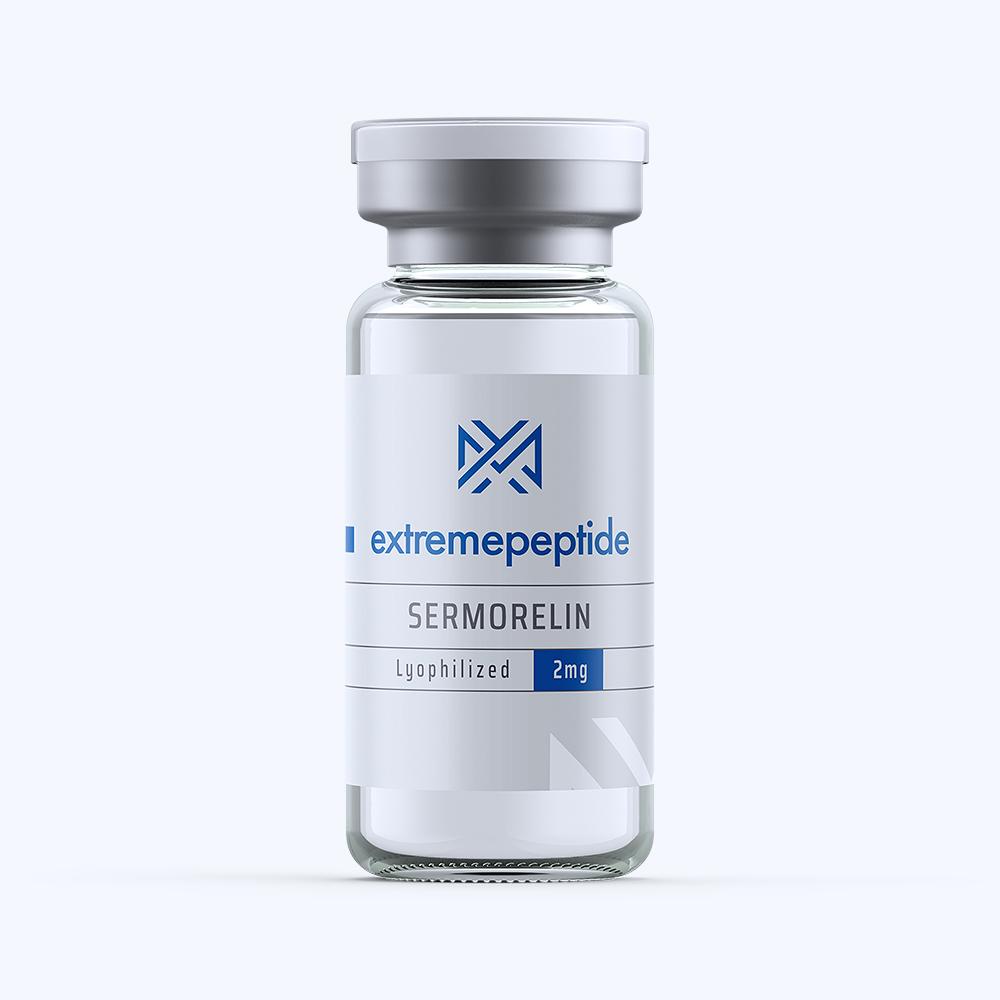
Sermorelin Presentation and Storage
Sermorelin is typically presented for scientific study in a sterile, non-pyrogenic powder which is lyophilized (that is, freeze-dried). The peptide itself is typically introduced to the animal test subject to the subject’s body fat. The peptide is also mixed with a soluble liquid (typically sodium chloride) to create a solution suitable for testing.
It is further recommended that when scientific study on animal test subject will commence that the test site is rotated on a periodic basis. It is also recommended that the peptide is administered to the animal test subject with a sterile, disposable syringe and needle. The syringe that is used should consist of a small enough volume that the recommended dosage for research be drawn from the vial that is shipped with a consistent amount of accuracy.
Upon recipt, the vials of Sermorellin should ideally be stored refrigerated at a temperature range of 2 degrees to -8 degrees Celsius, or a range of 36 degrees to -46 degrees Fahrenheit.
Sermorelin should not be administered if the following occurs in the solution:
- If particles are visible
- If the solution itself is cloudy
Observed Properties of Sermorelin
According to scientific study that has been built around animal test subjects, it has been determined that the peptide’s absorption properties were reached at a time interval of 5 to 20 minutes. During this time frame, it was determined that the peptide’s absolute biovailability was approximately 6 percent. It was also noted that the mean volume of distribution fell into a range between 23.7 and 25.8 liters.
A study on Sermorelin’s elimination properties have indicated that the peptide is cleared from the animal test subject’s circulation rather rapidly. This may be due to the fact that the peptide’s half-life is very short, as it was determined that it lasts only 11 to 12 minutes after it is presented to the animal test subject’s body.
Sermorelin Side Effects
According to scientific study that has been based on animal test subjects, it has been determined that a significant number of test subjects develop anti-GRF antibodies at least once during the treatment phase. It has yet to be determined what the significance of these developed antibodies play, and it is oftentimes shown that a positive test of one growth assessment will become negative by the next assessment interval. With that being said, it has been thought that the antibodies do not appear to have an adverse effect on growth, nor do they appear to have a relation to a specific adverse reaction profile.
And while there has not been a generalized allergic reaction to Sermorelin reported through study of the animal test subjects, it is thought that the most common treatment-based adverse effect is a local reaction that is characterized by pain, swelling, or redness. It has been noted that this reaction typically occurs in about 1 in 6 animal test subjects.
Other side effects that have been observed through the usage of Sermorelin include headache, flushing, dizziness, somnolence, hyperactivity, dysphagia, and urticaria. When the peptide has been administered to an animal test subject, the reactions have also included nausea, vomiting, dysgeusia, tightness in the chest, and pallor. However, it should be noted that in the case of both instances of introduction, the side effects that have been present have been minor.
Precautions Before Utilizing Sermorelin
As is the case with other peptides, it is important to keep a few basic things in mind before utilizing Sermorelin on animal test subjects.
Firstly, it is always important to work with the highest level of purity possible. A diluted peptide will produce results with greater variance; if these results are part of a long-term study, this variance could ultimately compromise the research data. Secondly, it is always important to make sure that the exact quantity of Sermorelin is being ordered in order to accomplish the exact scope and goals of the project. Finally, it is important to ensure that detailed instructions regarding the peptide’s proper usage and storage is included. Taking his step eliminates any instance of guesswork regarding the peptide, its usage, or its functionality.
Click here to read Sermorelin Part 1
Click here to view / download PDF
